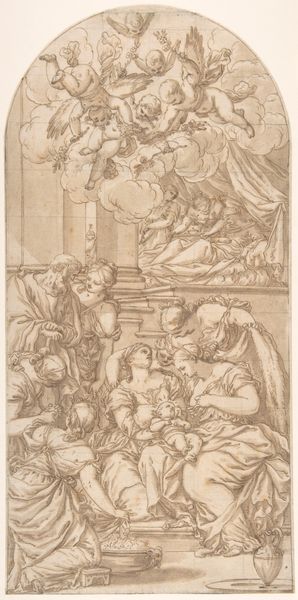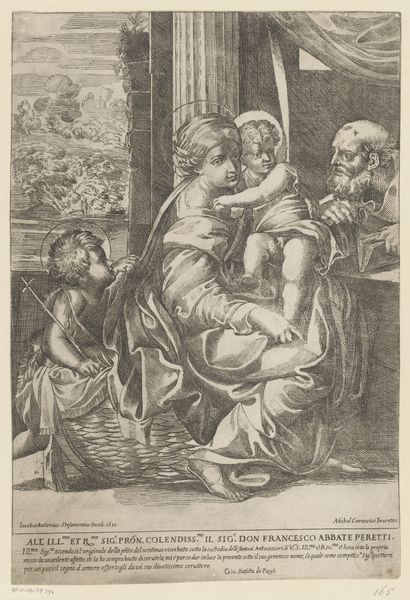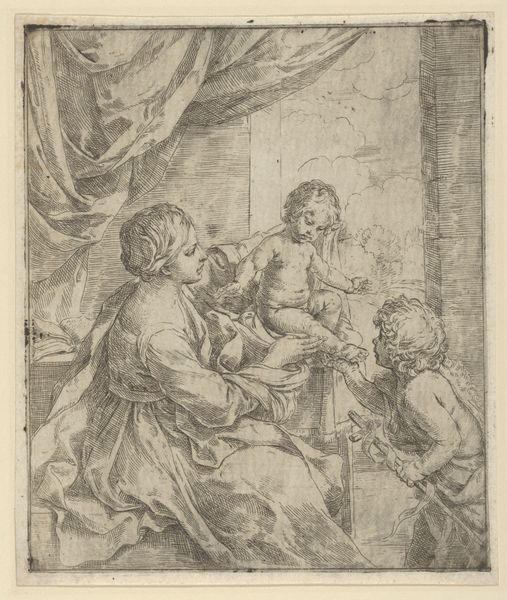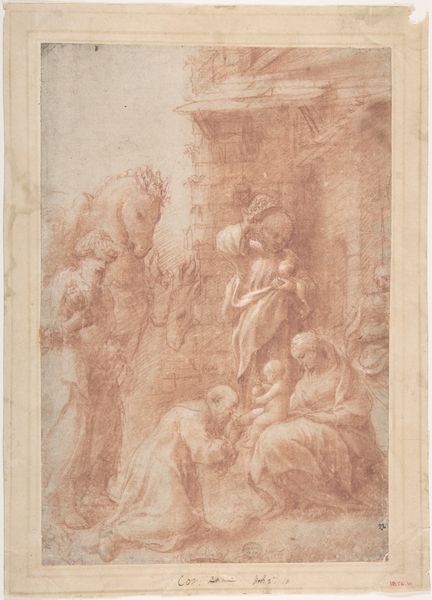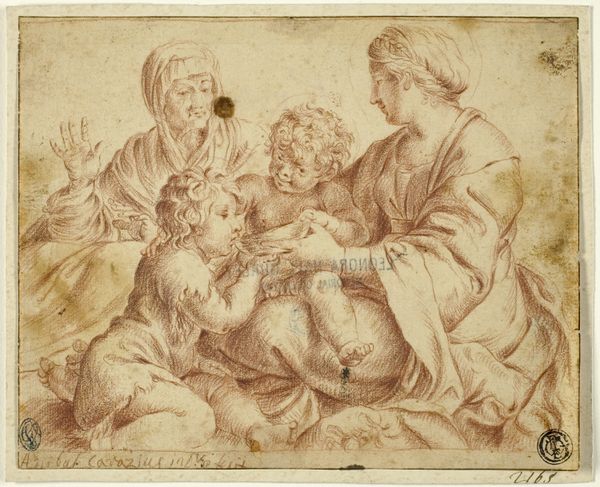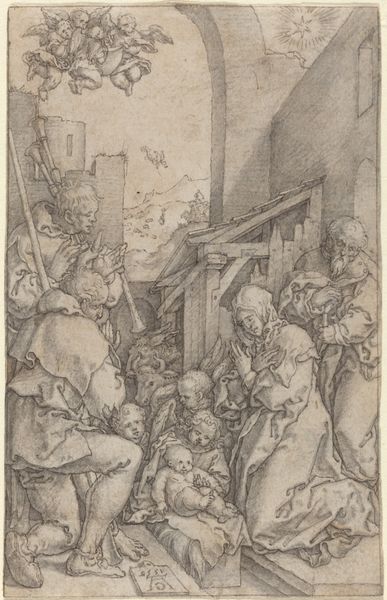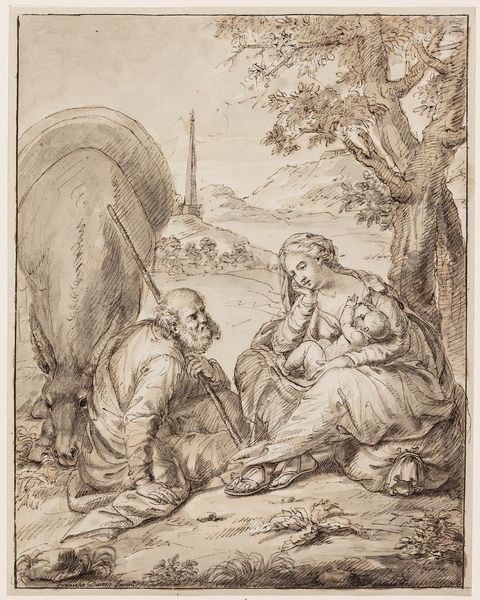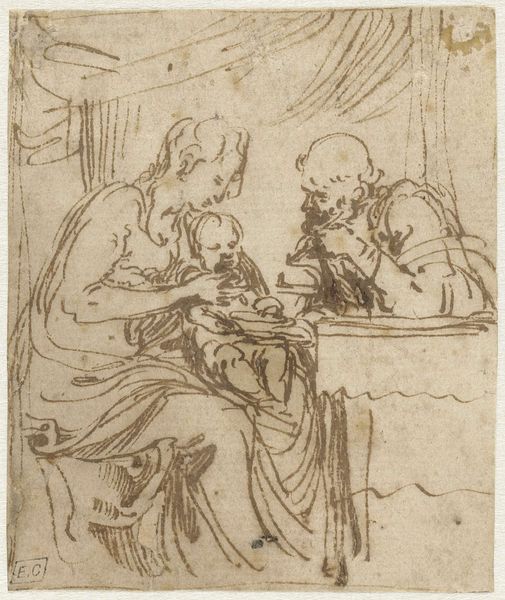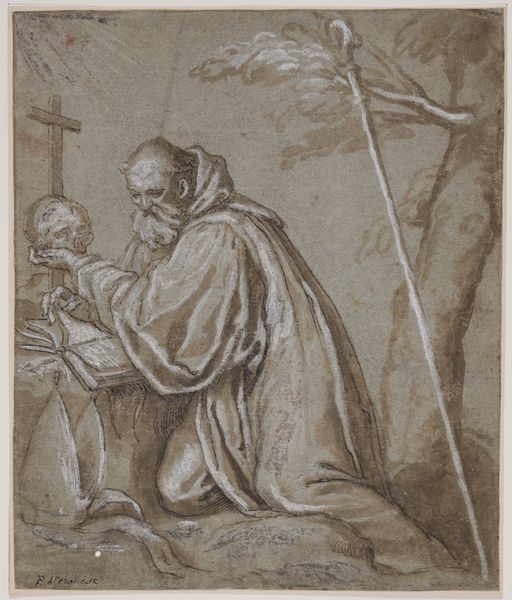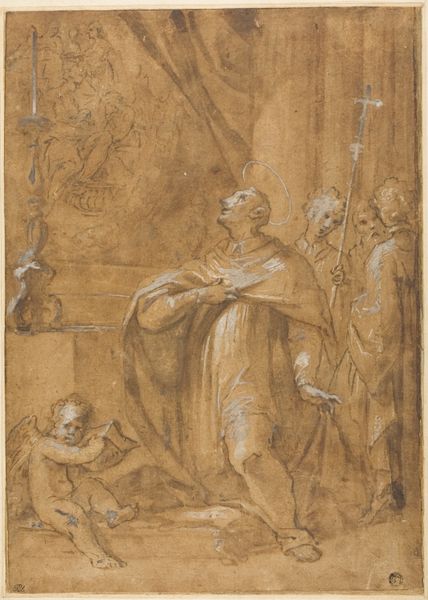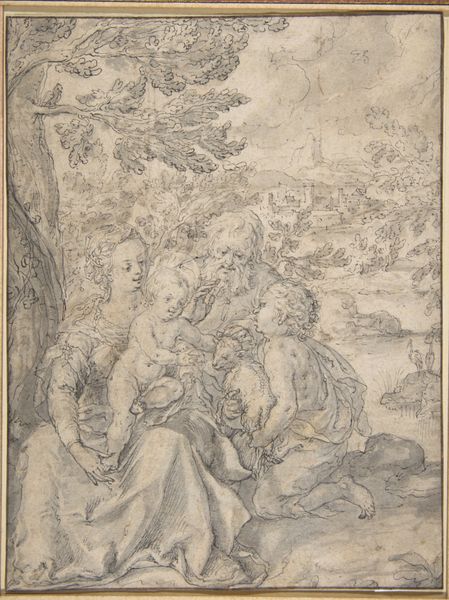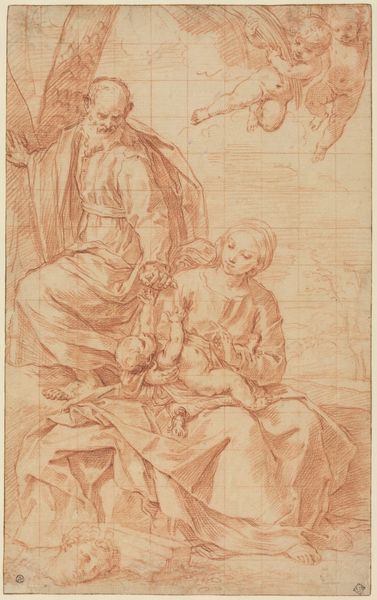
The Madonna Adoring the Child, with an Angel 1500 - 1537
0:00
0:00
drawing, charcoal
#
drawing
#
charcoal drawing
#
figuration
#
madonna
#
oil painting
#
child
#
charcoal
#
history-painting
#
italian-renaissance
#
angel
Dimensions: 9 1/2 x 7 3/16 in. (24.2 x 18.3 cm)
Copyright: Public Domain
Curator: Oh, this piece feels immediately devotional, almost ethereal. It’s pulling me in. Editor: Indeed. We’re looking at "The Madonna Adoring the Child, with an Angel," a drawing attributed to Lorenzo di Credi, placing it sometime between 1500 and 1537. It’s a charcoal drawing currently housed at the Metropolitan Museum of Art. The subdued palette lends it an air of introspection. Curator: It does. And I think that limited palette only heightens the drama. Look at the way the light catches on Mary’s robe—she’s the focus, yes, but there’s also a sense of weight about her posture, kneeling as she is. Do you get that sense of emotional gravity too? Editor: Absolutely. Considering the artistic conventions of the Italian Renaissance, there’s also an implicit understanding of Mary's future suffering woven into the scene, as the piece reflects on not just adoration, but sacrifice, situating motherhood within the wider sociopolitical landscape. The looming architectural framework further suggests vulnerability, hinting at the temporary nature of safety. Curator: That’s insightful. It's interesting that the architectural elements you mentioned have a roughness. I’m also captured by the figures. The softness di Credi achieves with charcoal is really remarkable, and look at the angel’s gaze, directing the viewer to the child who anchors all attention. It’s like the artist knew how we all feel. Editor: The use of line also helps to establish a hierarchy. Sharper, more defined lines for Mary emphasizes her importance, drawing our gaze. The softer lines, and perhaps even their slightly blurred presence, assigned to the angel and child reflect a perceived social hierarchy of relative importance, echoing cultural and theological structures of that era. Curator: Well said. It's a testament to di Credi's skill that a seemingly simple devotional image opens itself to such rich, multifaceted interpretations. What begins as piety morphs into questions of identity, and motherhood in light of society. Editor: Agreed. A seemingly traditional rendering transforms under closer scrutiny. This drawing exemplifies the way in which Renaissance art both adhered to and challenged the evolving norms. It’s about motherhood but also more generally speaks about how social pressures are revealed through intimate settings. A small window into big worlds.
Comments
No comments
Be the first to comment and join the conversation on the ultimate creative platform.
